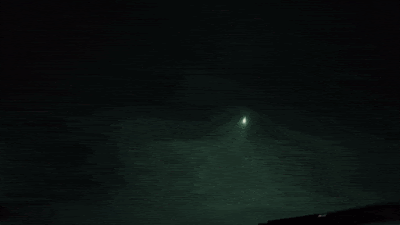On the morning of Wednesday 4 September 2024, planetary scientist Jacqueline Fazekas working at the University of Arizona's Catalina Sky Survey detected a fast moving object, which she interpreted as a potential Near Earth Asteroid. She reported this to the International Astronomical Union's Minor Planet Center, where it was given the provisional designation CAQTDL2. This initial discovery was followed by a series of further sightings from other observatories, confirming that the object was an asteroid, which was then named 2024 RW1, and that it was on a collision course with the Earth.
The designation 2024 RW1 implies that the asteroid was the 47th asteroid (asteroid W1 - in numbering asteroids the letters A-Z, excluding I, are assigned numbers from 1 to 25, with a number added to the end each time the alphabet is ended, so that A = 1, A1 = 26, A2 = 51, etc., which means that W1 = (25 x 1) + 22 = 47) discovered in the first half of September 2024 (period 2024 R - the year being split into 24 half-months represented by the letters A-Y, with I being excluded).
Asteroid 2024 RW1 is calculated to have had a 1450 day (3.97 year) orbital period, with an elliptical orbit tilted at an angle of 0.53° to the plain of the Solar System which took in to 0.74 AU from the Sun (74% of the distance at which the Earth orbits the Sun) and out to 4.23 AU (4.23 times the distance at which the Earth orbits the Sun, and almost three times the distance at which the planet Mars orbits). It is therefore classed as having been an Apollo Group Asteroid (an asteroid that is on average further from the Sun than the Earth, but which does get closer).
Asteroid 2024 BX1 is calculated to have had four close encounters with the Earth before finally impacting, with the first in August 1912, and the most recent in October 2020. It has also had close encounters with Venus in June 1966 and January 2009, and Jupiter in November 2006 and September 2018. Asteroids which make close passes to multiple planets are considered to be in unstable orbits, and are often eventually knocked out of these orbits by these encounters, either being knocked onto a new, more stable orbit, dropped into the Sun, knocked out of the Solar System or occasionally colliding with a planet.
By 11.00 am GMT on 4 September 2024, the European Space Agency had calculated that Asteroid 2024 RW1 would impact the Earth, entering the atmosphere at about 5.08 pm over or close to northern Luzon Island, the Philippines. In the event the asteroid entered the atmosphere at 4.46 pm GMT (0.46 am on 5 September, Philippines time) over the Pacific Ocean to the east of Luzon, producing a bright fireball meteor, with a distinct green colour, which probably indicates that it had a high magnesium content.
Objects of this size probably enter the Earth's atmosphere several times a year, though unless they do so over populated areas they are unlikely to be noticed. They are officially described as fireballs if they produce a light brighter than the planet Venus. It is possible on this occasion the object is known to have produced meteorites that reached the surface (an object visible in the sky is a meteor, a rock that falls from the sky and can be physically held and examined is a meteorite).
Based upon observations in space and on entry to the Earth's atmosphere, 2024 RW1 is calculated to have been about a metre in diameter, and to have had a high magnesium content, something which in turn implies a stony meteorite rich in the mineral olivine (counter to possible expectations, metallic meteorites seldom contain much magnesium). However, as it fell to Earth over the Pacific Ocean, it is unlikely that any fragments of the asteroid will be recovered to test this hypothesis. 2024 RW1 is the eighth asteroid ever to have been discovered before impacting the Earth.
See also...


.jpg)



.jpg)
.jpg)
.jpg)


%20(1)%20(1).png)